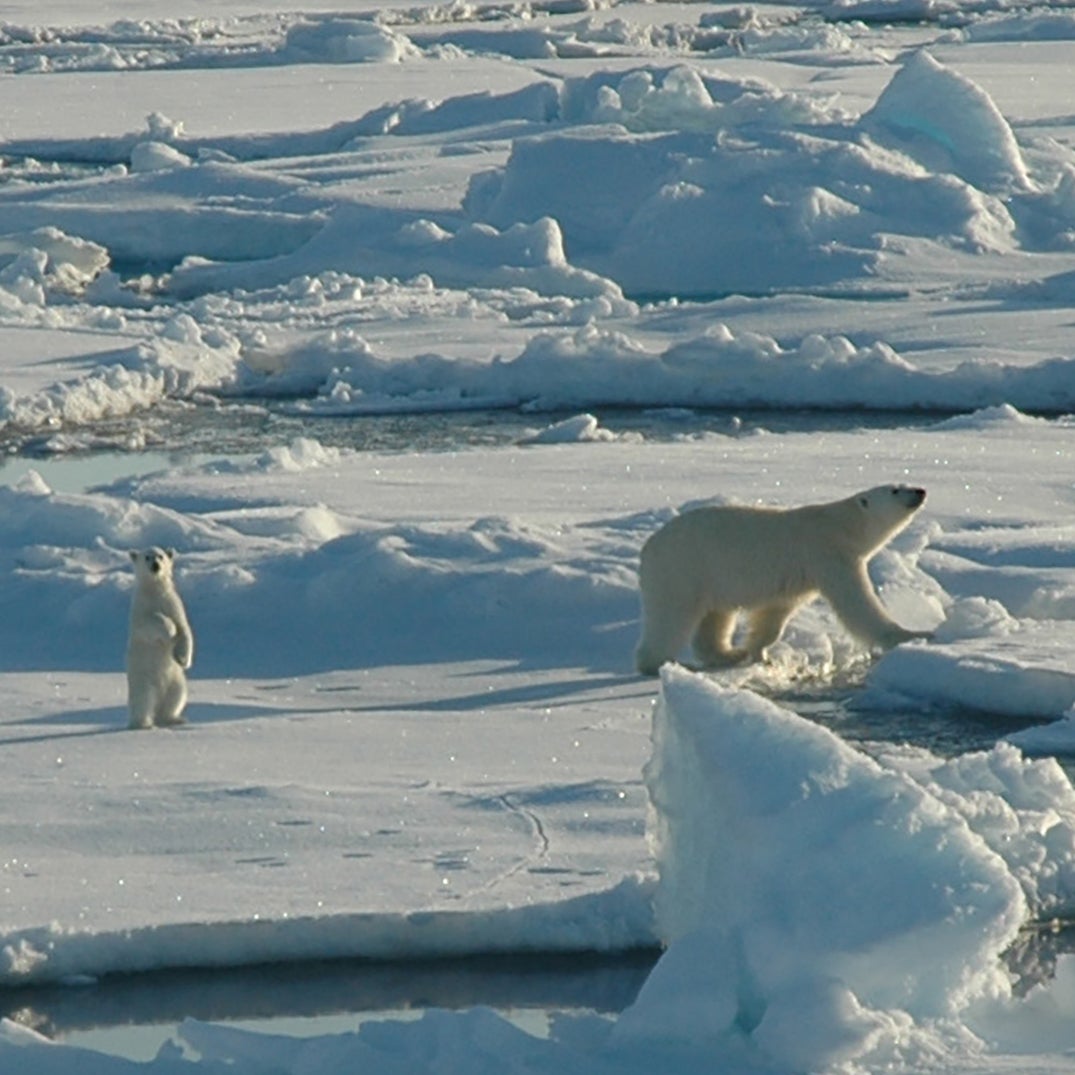Regulatory uncertainty. It’s a tidy phrase that sums up the problem that the Trump administration ran into while working in favor of the oil and gas administration at the expense of all else.��And��just like we predicted, that uncertainty cost them their signature drilling project.��What sunk Republicans’ plans was simply the rushed, incomplete nature of the process and paperwork involved.��On June 1, Interior Secretary Deb Haaland��suspended activity at oil and gas leases in the Arctic National Wildlife Refuge, undoing some of the damage implemented by the previous administration.
First, some context:��at , ANWR is the largest unit in our country’s National Wildlife Refuge system. Located in the northeast corner of Alaska, it’s one of the last unspoiled stretches of land left on this continent, and is home to 250 species of animals, including the imperiled southern Beaufort Sea polar bear population��and��migratory birds.��ANWR also provides calving grounds for one of the largest remaining herds of caribou. The Gwich’in Nation relies on those caribou, and other natural resources in ANWR, to support their way of life.
President Eisenhower protected��ANWR in 1960, and President Carter enlarged it to its current size��in 1980. Crucially, Carter left��ANWR’s 1.5 million-acre coastal plane,��available for oil exploration, but only with congressional approval.��
A survey conducted in 1984 and 1985 concluded that as many as could lie beneath the coastal plane’s tundra. Republicans have been pushing to drill there since at least 1977. They came close in March 1989, when a Senate committee approved drilling the coastal plane. But that was just ten days before the Exxon Valdez disaster. They came close again in 1995, when the party controlled both houses of Congress. But President Clinton vetoed the measure. They thought they had approval��during the George W. Bush administration, only to lose out to a filibuster.
Over the last 40 years, drilling in ANWR transformed from a financial issue��into a symbolic one. Falling oil prices meant that oil extraction there would no longer be profitable. As the public learned what the oil and gas industries knew about climate change, and as it became clear that oil exploration in the refuge would threaten keystone species like the polar bear, drilling there also became . Still, winning this symbolic argument mattered so much to Republicans that they wrote it into the only significant legislative achievement they managed to pass during the Trump administration: the 2017 corporate tax cuts, which on the sale of oil and gas leases in ANWR.
Trump’s Department of the Interior, managed first by scandal-plagued Ryan Zinke, then by the even more corrupt David Bernhardt, got down to business. Despite the flagrantly illegal nature of much of the work conducted at the department during the tenure of those two secretaries, the standard process��still had to be followed. The biggest hurdle for Trump’s DOI��was the requisite Environmental Impact Statement, a required document that outlines how a proposed project will affect the planet.
As an aside, that EIS was approved��during the illegal tenure of William Perry Pendley (an openly racist, homophobic, xenophobe who’s been working to steal public lands from the American people for at least 40 years) as the acting director��of the Bureau of Land Management from 2019 until 2020. The fallout from��Pendley’s work has yet to fully shake out in court, but adds an additional risk factor for the future of oil exploration in ANWR.
But the Trump administration failed to complete the mandated EIS until late 2019, after the 2017 tax cut law.��Basically, they flunked their homework assignment.
On Tuesday, Haaland signed��, which��reads:
In light of the alleged legal deficiencies underlying the program, including the inadequacy of the environmental review required by the National Environmental Policy Act, the Secretary of the Interior shall, as appropriate and consistent with applicable law, place a temporary moratorium on all activities ofthe Federal Government relating to the implementation of the Coastal Plain Oil and Gas Leasing Program, as established by the Record of Decision signed August 17, 2020, in the Arctic National Wildlife Refuge. The Secretary shall review the program and, as appropriate and consistent with applicable law, conduct a new, comprehensive analysis of the potential environmental impacts of the oil and gas program.
The writing was on the wall long before this, though. Last year, all major banks announced they wouldn’t provide financial support for any drilling projects in ANWR, due to the transparently rushed nature of the EIS, along with the general unpopularity of the project.��So when Trump’s DOI rushed through a lease sale on January 6 (yes, that January 6), no major oil companies participated. Only about half of the available lease areas were sold, all at their minimum rate of $25 per-acre—which only��raised about $14.4 million, well short of the $1.8 billion Republicans had forecasted. It wasn’t even clear if any of the lease buyers had the financial ability to conduct oil exploration operations.
Now, with Interior Secretary Haaland ordering a new environmental review—when conducted properly, the��process��should and take several years —and President Biden proposing��a budget��to address climate change, pollution, and public lands, it seems like the Republican dream of drilling for oil in ANWR may finally be over. In the end, it wasn’t public opinion, overwhelming scientific evidence, or even economic factors that killed it. It was simply competence.


